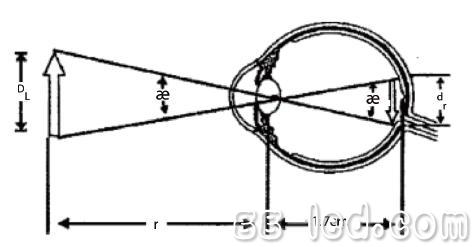Trench Cover,Trench Drain,Drain Cover,Steel Trench Covers Hunan Furui Mechanical and Electrical Equipment Manufacturing Co., Ltd. , https://www.thresher.nl
Due to the rapid development of the LED industry in recent years, many high-power, high-brightness LEDs have emerged for daily lighting, decorative environments, displays, and indication signals. LEDs, which are emerging artificial light sources, differ greatly from conventional light sources in terms of the principle of illumination, the materials used to make the light source, and the optical design. Therefore, it is more necessary to know whether the light radiation generated by this emerging light source is harmful to the human body, such as whether the generated ultraviolet light produces skin cancer and cataract in the human body. The blue light produced, whether the heat can burn the retina and the skin. For the evaluation of the harmfulness of LED light radiation, the International Electrotechnical Commission (IEC) published the relevant standard IEC 62471:2006 in 2006, and our country also released the equivalent standard GB/T 20145-2006 in 2006. This article will explain the test methods and hazard classification in the photobiosafety standard.
1. The first thing to understand is that the items to be tested in the standard are: photochemical UV damage to human eyes and skin (200nm-400nm), near-ultraviolet damage to human eyes (315nm-400nm), retinal blue light hazard (including small light source) (300nm) -700nm), retinal thermal hazard (380nm-1400nm), retinal thermal hazard for weak visual stimuli (780nm-1400nm), infrared to human eye damage (780nm-3000nm), skin heat hazard (380nm-3000nm).
2. The second thing to know is the instrument and environment used. The instrument mentioned in the test in this paper is based on the calibration of the spectrum analyzer. Two different light intensity standard lamps are used in the sub-band. Among them, a standard xenon lamp with a constant current of 300 mA is used for spectral calibration of 200 nm to 350 nm; a spectral signal of 350 nm to 800 nm is calibrated, and a standard tungsten halogen lamp is used as a light intensity standard lamp. The test system adopts the method of mixing the aperture of the light ball as the input port of the detector, and the small mixed light ball can fully receive the photometric signal in front of the detector. Since the illuminance signal is strong in the measurement of the photobiosafety system, the light mixing sphere is It can also make a good cosine correction to the directionality of the tested luminaire when the luminosity signal is fully received. In addition, the random reflection of the internal material of the light mixing sphere causes the incident light to be polarized. After multiple reflections, the incident light with the same spectral characteristics can be filled with the incident aperture of the radiation, thereby avoiding the difference in polarization characteristics of the incident light at different angles.
3. Next, you need to understand the key definitions in the standard, specific terms and test conditions:
(1) Measuring distance: It is determined by the type of lamp, mainly divided into two categories: general lighting type lights and other light sources. For general lighting type lamps (GLS), the hazard value test distance should be given at a distance of 500 lx illuminance, but this distance cannot be less than 200 mm. The hazard values ​​of the remaining light sources are given at a distance of 200 mm.
(2) Alignment angle α: Table Sightseeing source to side angle α refers to the angle of view of the sightseeing source to the eye. For example, the calculation method of the Sightseeing source to the corner: for example, for a tubular 20 mm long and 3 mm in diameter For the light source, the α at r=200mm directly in front of the axis of the condensed light will be determined by the average size Z, Z=(20+3)/2=11.5mm, so α=Z/r=11.5/200=0.058rad (as shown in the figure) One shown). However, due to the physiological limitations of the human eye, in the photobiosafety, the source of the viewing source is limited to between 1.7 mrad and 100 mrad. Therefore any greater than αmax (100 mrad) will be defined as αmax, and less than αmin (1.7 mrad) will be defined as αmin. Therefore, if the length of the light source is greater than 20 mm (20 mm is one tenth of the test distance of 200 mm) in the above calculation example, the effective light source size can only be calculated by using 20 mm for the corner. The source of the sightseeing source plays a role in determining the limit when determining the retinal thermal hazard. 
For more information, please refer to the September issue of "High-tech LED-Technology and Applications" 
Measurement and classification of LED light biosafety
[Source: "High-tech LED-technology and application" September issue Ding Wei]